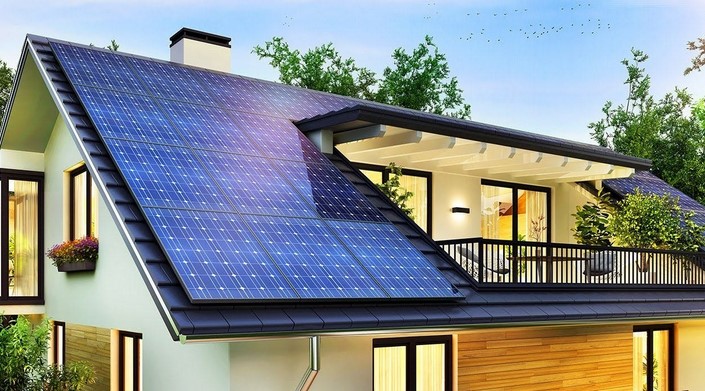Sustainable Building Techniques for Eco-Friendly Homes

Source:https://miro.medium.com
As climate change and environmental degradation continue to challenge global stability, the building industry is turning toward solutions that minimize impact on the planet. One of the most promising approaches is the integration of sustainable building techniques into residential construction. These methods prioritize energy efficiency, resource conservation, and long-term durability while ensuring a healthy living environment for occupants. This article explores how eco-conscious homeowners and builders can incorporate sustainability into home construction, making a meaningful contribution to environmental preservation.
Eco-Friendly Materials for Green Construction
Choosing the right materials is one of the most crucial steps in building an environmentally friendly home. The goal is to reduce reliance on non-renewable resources while maximizing the use of materials that are renewable, recycled, or sustainably sourced.
1. Recycled and Renewable Materials
Modern sustainable construction frequently incorporates recycled steel, reclaimed wood, and bamboo. These materials reduce the need for virgin resources and help divert waste from landfills. Bamboo, for example, is a fast-growing plant that matures in three to five years, making it an ideal renewable resource. Recycled steel, on the other hand, retains its strength and structural integrity while reducing mining-related environmental damage.
2. Low-VOC and Non-Toxic Options
Volatile Organic Compounds (VOCs) found in conventional paints, adhesives, and finishes can contribute to indoor air pollution. Choosing low-VOC or zero-VOC alternatives enhances indoor air quality and reduces health risks for inhabitants. Materials such as natural linoleum flooring, water-based paints, and formaldehyde-free insulation are excellent choices for maintaining a healthy indoor environment.
3. Locally Sourced Products
Using locally sourced building materials not only reduces transportation emissions but also supports regional economies. By minimizing the carbon footprint associated with shipping and logistics, local sourcing is a vital part of sustainable construction strategies.
Energy Efficiency and Smart Home Design
Reducing a home’s energy consumption is one of the most effective ways to enhance sustainability. Smart design choices during the planning and construction phases can significantly impact the home’s performance and operating costs.
Passive Solar Design
Passive solar design takes advantage of the sun’s natural energy to heat and cool a home. By positioning windows, walls, and floors to collect and distribute solar heat during the winter and block it in the summer, homeowners can reduce reliance on artificial heating and cooling systems. Incorporating thermal mass, such as concrete or stone, can store heat during the day and release it at night, maintaining a stable indoor temperature.
Energy-Efficient Windows and Insulation
High-performance windows with double or triple glazing and low-emissivity coatings reduce heat loss in winter and prevent overheating in summer. Proper insulation in walls, roofs, and floors also plays a critical role in maintaining indoor temperatures, lowering energy bills, and reducing a home’s carbon footprint.
Smart Appliances and LED Lighting
Incorporating Energy Star-rated appliances, programmable thermostats, and LED lighting can significantly lower a home’s electricity consumption. These smart technologies not only conserve energy but also offer long-term cost savings for homeowners.
Water Conservation and Sustainable Landscaping
Water scarcity is a growing concern in many parts of the world. Integrating water-efficient systems into home design can help reduce the demand on local water supplies while promoting sustainability.
Rainwater Harvesting and Greywater Systems
Rainwater harvesting systems collect and store rainwater from rooftops for use in irrigation, flushing toilets, or even laundry. Greywater systems recycle water from showers, sinks, and washing machines for similar purposes. These systems reduce the reliance on potable water and make use of resources that would otherwise go to waste.
Native and Drought-Resistant Landscaping
Choosing native or drought-tolerant plants for landscaping reduces the need for irrigation and maintenance. These plants are adapted to the local climate and soil, requiring fewer resources to thrive. Xeriscaping, which involves designing landscapes to minimize water use, is an effective method for creating sustainable outdoor spaces.
Permeable Surfaces
Driveways, walkways, and patios made from permeable materials like gravel, porous concrete, or permeable pavers allow rainwater to filter through the ground. This helps prevent runoff and supports groundwater recharge, contributing to a more sustainable water cycle.
Subheading: The Importance of Certification and Building Standards
When building an eco-friendly home, certification programs can serve as a benchmark for sustainability. Certifications such as LEED (Leadership in Energy and Environmental Design), ENERGY STAR, and Passive House provide guidelines and verification to ensure homes meet rigorous environmental and performance standards. These certifications not only validate the quality of construction but can also increase property value and market appeal.
The demand for environmentally conscious living continues to grow, and sustainable building techniques are at the heart of this movement. By selecting eco-friendly materials, improving energy and water efficiency, and adhering to green building standards, homeowners and builders can significantly reduce environmental impact. As sustainability becomes an integral part of modern construction, these techniques offer not only ecological benefits but also long-term savings and improved quality of life. Embracing these practices today paves the way for a cleaner, healthier, and more resilient future.